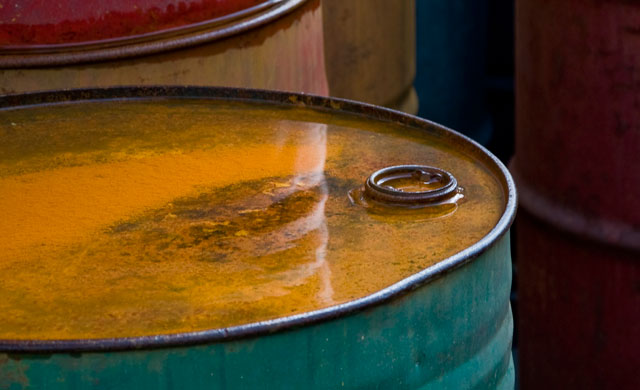Chariot is one of the most talked about oil and gas stocks. After the failure of the Tapir, Investors are nervously awaiting the results for the Kabeljou exploratory well for the end of September. Interest has been piqued by the farm-in partners of BP and Petrobras, with whom speculation of superior appraisal work has given another slice of hope for Chariot PI’s. BP has a Chance of Success (CoS) of 70%, and this Kabeljou 24%, but Petrobras has not been so lucky in recent years until now.

Petrobras had a dire results call with profits falling due to their obligation to buy oil on the international market for Brazil, currency exchange losses and the write-down of 41 empty or non-commercial wells since 2009. They promised to end their dry run and have seemingly turned the corner with its Santos basin Carcara prospect. With over a 400m column discovered so far and more expected, analysts are calling this one of the most significant finds in South American history.
The Santos basin was formed when South America split from Africa in the Early Cretaceous, or 100-150 million years ago. A lake was formed that dried out and re-flooded, just like the Mediterranean sea 6 million years ago, and just like what will happen when the rift valley pings East Africa into the Indian Ocean. The lake formed the basis for life that was the genesis for rich source rocks and the drying was the formation of the salt caps, or oil trapping seals – the perfect conditions for making and keeping oil and gas in place, as can be seen in the Gulfs of Mexico and Arabia.
This is where Chariot fits in, as they have been trying to match the Western Atlantic finds to the Namibian basins. They have three blocks – one on the border with Angola, one central and level with Windhoek, and one off the mouth of the Orange River on the border with South Africa. However, their gamble is that there is sufficient trapping capability away from the major salt zones off the Angolan coast (which is the main conjugate to the Santos basin) – this clearly adds a heavy element of downside risk, as the salt which ebb’s and flows over time (like an old glass window) to form caps, or diapirs, is not as prevalent.
The Northern one is the most analogous in terms of the Santos basin. It is 100% owned by Chariot and was drilled back in May with the Tapir South well. The Company discovered decent permeability and reservoir sands but no oil, immature source rock & extensive volcanics. The stock fell from highs of 250p to 70p on the back of this news but has slowly been climbing back to 120p as the more hotly anticipated drilling of the southernmost block, Nimrod, started on the 27th of July with the drill ship Poseidon.
This is being done with a free carried interest with Petrobras (30%) and BP (45%) with an expected time frame of sixty days and unrisked prospective resources of 4.9Bbbls – so the catalyst is set for the end of September and a big one at that, although on the dry Tapir well the announcement came within the 50% of the allotted time span, taking investors by surprise. The CoS is 24%, water depth 350m, planned depth of the well 3.5 Km and sits above an oil generating kitchen, confirmed by hydrocarbon finds nearby and the presence of oil seeps.
What’s exciting about the Nimrod prospect, apart from the major’s onboard, is that there is a proven gas field next door, Kudu, and evidence from the 3-D seismic of numerous anomalies – Kabeljou certainly is a tasty fish indeed. The Kudu field has been passed through Shell, Chevron and Tullow but has not been developed due to lack of infrastructure – more recent development plans have suggested the world’s longest subsea tie-back to an 800MW power station on-shore in Namibia.
The 3-D seismic has thrown up a class 3 Amplitude Variation Offset, or AVO, that looks stronger on the “fars” than the “nears”, an indicator of oil. Translated into English, theoretically, when analysing the data, if the signal is stronger, when the point being measured is at a higher angle between the receiver and source, then there is an indication of oil in place.
How are the brokers looking at this – 7 buys, 2 hold, 1 underperform, and a mean target price of 200 pence. The logic being a 15%-25% probability of scoring a hit, and a valuation of 1,200 pence plus, alternatively, a miss and a 50% or more fall. However, the Company will be left with cash in the bank to drill its central block, or have another crack at its northern prospects, and have the potential for further farm-outs.
This is certainly a stock which has massive swings ahead, so surely the play to be in terms of volatility with a hedged downside position of long put options. Unfortunately these aren’t out there, but you could theoretically construct a spread-bet that synthetically replicates the position and lowers the downside risk. The problem is when to make the call. The Company has surprised with early news, yet you don’t want to get wiped out of your stop loss by pre-emptive rises in the share price.
Can Nimrod throw up a God defying triumph of biblical proportions. With these numbers Chariot is too tempting, as there is so much potential with the 3-d seismic and solid farm-in partners, but on the flipside, the downside risk is huge. A Buy and a punt, but definitely something for the part of the portfolio you can afford to lose, and even better if you can wangle a decent hedge. Swing high sweet Chariot.


 Hot Features
Hot Features












